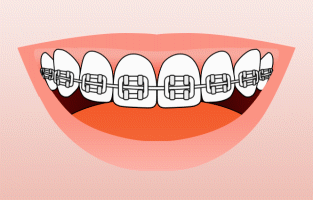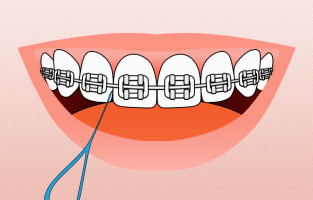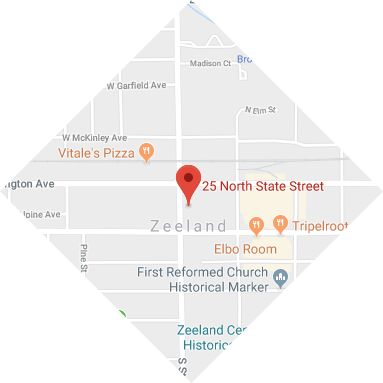Brushing and Flossing
When you have braces, it's very important to brush and floss after every meal in order to keep your teeth and gums healthy throughout your orthodontic treatment. As you eat, your teeth, braces and appliances collect food. If this food is left overnight, a thick plaque forms on the teeth and gums. Plaque causes bad breath, tooth decay and gum disease. Bleeding and swollen gums are a sure sign that plaque is not being properly removed. If your gums are swollen and inflamed, your teeth will not move as easily, you will experience more discomfort during your treatment, and white spots or decay will form on the teeth under and around the braces and appliances. It is discouraging to work hard to straighten teeth, only to finish and find decay and white spots on the teeth. Excellent oral hydiene is essential for a great orthodontic result. If you need help choosing the right toothbrush, toothpaste, and dental floss, please ask us and we can help you choose the right products for your teeth and your appliance. There is also a toothpaste that can show plaque that needs to be brushed away in blue called PLAQUE HD. You can buy this from us or online.
Brushing with Braces
Brush your teeth for four minutes after every meal with a soft-bristled, small-headed toothbrush and fluoride toothpaste. A travel toothbrush carried in a purse or placed in a locker is great for brushing after lunch. As an alternative to a regular soft-bristled toothbrush, you can use a powered toothbrush to increase your brushing effectiveness. Brush the outside and inside surfaces of your teeth using small, gentle, circular motions while positioning the head of the toothbrush at a 45-degree angle to the gum line. Brush your teeth’s chewing surfaces and the inside surface of your front teeth using short, gentle, back-and-forth motions. Pay close attention to the areas around your brackets or other appliances. Once you have brushed for four minutes, re-examine your teeth for any remaining food and plaque and brush these areas again as needed. Concentrate on brushing your gums and gumline as well as the teeth and under the braces.

Flossing with Braces
Flossing after every meal will help keep your teeth and braces clean, which will also help keep your treatment time on track. To floss with braces, use a floss threader or special orthodontic floss (platypus flosser) to thread the floss behind each wire. Wrap the ends of the floss around your pointer fingers of both hands, leaving a few inches of taut floss between them. Gently slide the floss between each set of teeth using a back and forth motion. Floss the sides of each tooth beneath the gum line to remove plaque and food particles. Repeat this process until you’ve flossed all of your teeth. If you find that your floss is not removing all of the food particles between your teeth and around your braces, the use of a waterpik can be very helpful. Use of a waterpik does not take the place of good brushing and flossing, but can be a helpful tool to help loosen food and plaque prior to brushing and flossing.

Daily Fluoride with Braces
The daily use of fluoride mouth rinse, such as ACT or Listerine with fluoride, reduces the possibility of getting cavities. Rinse for one minute after thoroughly brushing your teeth and gums. We especially recommend brushing with a fluoride gel just before bedtime to reduce the tendency for decalcification and decay around the braces for those who are at higher risk for cavities. Use fluoride gel or rinse as directed on the bottle or tube.
PLEASE REMEMBER THAT YOU NEED TO CONTINUE YOUR REGULAR DENTAL CHECK-UPS WHILE IN BRACES
It is important to continue to see your family dentist at last every 6 months for a thorough examination and cleaning.




 Website Powered by Sesame 24-7™
Website Powered by Sesame 24-7™